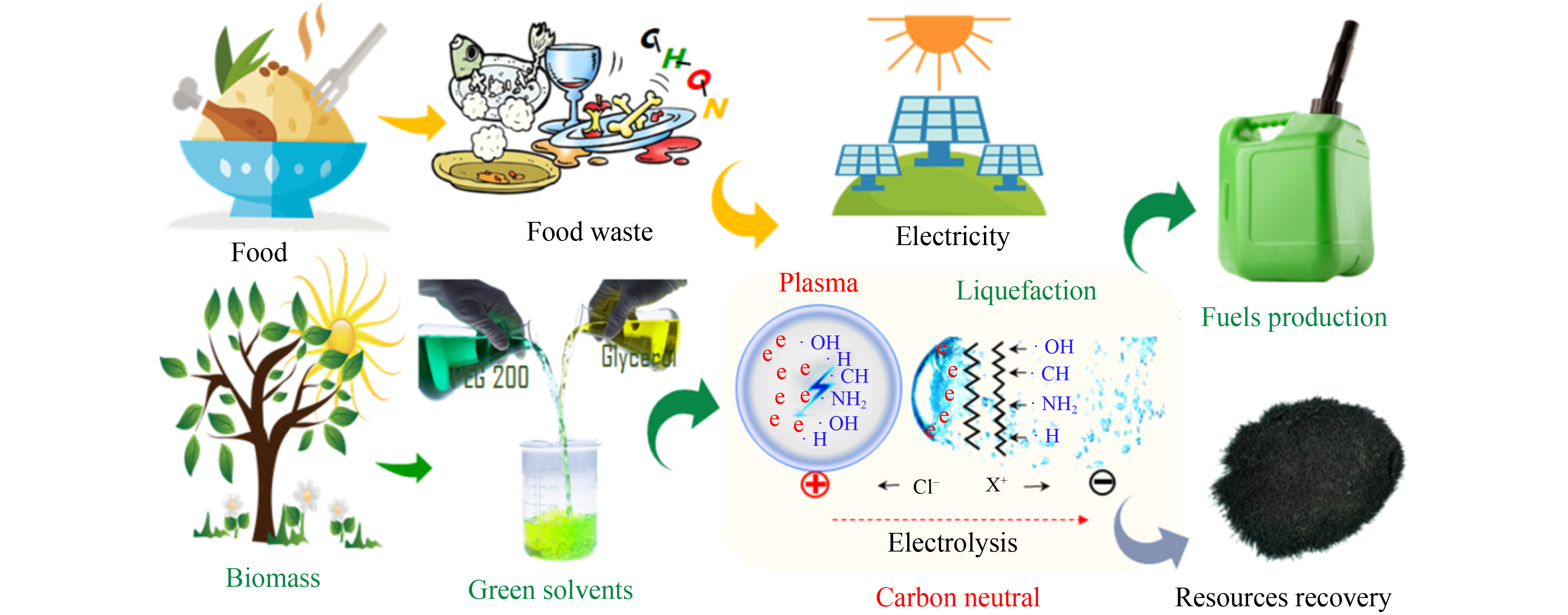The liquid yield and temperature curves under different pH conditions are shown in Fig.3. H
2SO
4 and NaOH were added separately to investigate the effect of solution pH on the liquefaction process. Fig.3(a) shows that the liquid yield with sulfuric acid addition was 95%, at a processing time of 6 min. When alkali was used in the liquefaction process, the liquid yield was only 62.4%, which is lower than that with no catalyst added (74.5%). Overall, these experimental results indicate that the liquid yield of food waste under alkaline conditions is significantly lower than that under acidic conditions. Fig.3(b) shows that the temperature of the solution was similar for all pH conditions, but the liquid yield varied significantly. This is due to the almost same composition of the mixed solution (solvent and food waste) with the same boiling point. However, during the PE, cellulosic biomass in food waste can be hydrolyzed to form glucose units (Eq. (1)) [
32]. These glucose molecules can be further oxidized by plasma-generated hydroxyl radicals to form D-glucuronic acid (Eq. (2)) [
33], and proteins and lipids in food waste can also be hydrolyzed and oxidized to form organic acids [
34,
35]. With the H
+ ions produced from the ionization of these organic acids, relevant anions can be generated simultaneously. These H
+ ions produced during PE can break the glycosidic bond in cellulose, which is beneficial to the liquefaction of biomass [
36]. Thus, during the alkaline PE process, the H
+ ions generated by PE will neutralize OH
– ions in the alkaline solution, which reduces the pH of the solution. The decrease in OH
– concentration also affects the liquid yield of food waste. In contrast, more H
+ ions will be produced in the acidic PE process, and contribute to the liquefaction of food waste. More details about the effects of the solution pH on the food waste liquefaction can be found in the next section.










